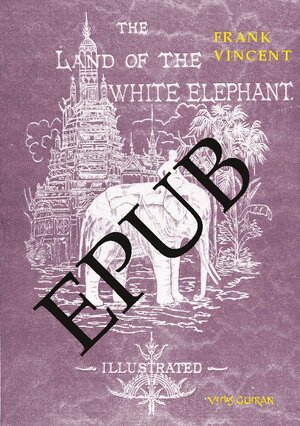
×
![Buchcover ISBN 9783946679288]()
Zielgruppen sind sowohl Leser, die sich für historische Expeditionen oder Reisen nach Burma, Laos, Vietnam und Kambodscha interessieren. Eine weitere Zielgruppe dürfte an Archäologie oder der Geschichte Angkors interessiert sein und nicht zuletzt kommen auch Leser von Abenteuergeschichten als Zielgruppe in Betracht. Ein weiterer Mittelpunkt ist die Geschichte der Kolonialzeit der Franzosen in Indochina.
The Land of the White Elephant
Sights and scenes in South-Eastern Asia, a personal narrative of travel and adventure in farther India, embracing the countries of Burma, Siam, Cambodia, and Cochin-China
von Frank VincentThis is a reprint from 1874 originally published by Harper & Brothers, New York.
From the content, arriving in Angkor:
WE, whose good fortune it is to live in the nineteenth century, are accustomed to boast of the perfection and pre-eminence of our modern civilisation, of the grandeur of our attainments in Science, Art, Literature, and what not, as compared with those whom we call ancients; but still we are compelled to admit that they have far excelled our recent endeavours in many things, and notably in the Fine Arts of painting, architecture, and sculpture. We were but just looking upon a most wonderful example of the two latter, for in style and beauty of architecture, solidity of construction, and magnificent and elaborate carving and sculpture, the great Nagkon Wat has no superior, certainly no rival, standing at the present day. The first view of the ruins is almost overwhelming. One writer says, ' The ruins of Angkor are as imposing as the ruins of Thebes or Memphis, and more mysterious ;' and another — M. Mouhot — whose work we have used as a guide-book in this distant part of Siam — thinks that ' one of these temples [Nagkon Wat] — a rival to that of Solomon, and erected by some ancient Michael Angelo — mighttake an honourable place beside our most beautiful buildings. It is grander than anything left to us by Greece or Rome.' At a first sight one is most impressed with the magnitude, minute detail, high finish, and elegant proportions of this temple, and then to the bewildered beholder arise mysterious after-thoughts — who built it ? when was it built ? and where now are its builders? But it is doubtful if these questions will ever be answered. There exist no credible traditions — all is absurd fable or legend.
From the content, arriving in Angkor:
WE, whose good fortune it is to live in the nineteenth century, are accustomed to boast of the perfection and pre-eminence of our modern civilisation, of the grandeur of our attainments in Science, Art, Literature, and what not, as compared with those whom we call ancients; but still we are compelled to admit that they have far excelled our recent endeavours in many things, and notably in the Fine Arts of painting, architecture, and sculpture. We were but just looking upon a most wonderful example of the two latter, for in style and beauty of architecture, solidity of construction, and magnificent and elaborate carving and sculpture, the great Nagkon Wat has no superior, certainly no rival, standing at the present day. The first view of the ruins is almost overwhelming. One writer says, ' The ruins of Angkor are as imposing as the ruins of Thebes or Memphis, and more mysterious ;' and another — M. Mouhot — whose work we have used as a guide-book in this distant part of Siam — thinks that ' one of these temples [Nagkon Wat] — a rival to that of Solomon, and erected by some ancient Michael Angelo — mighttake an honourable place beside our most beautiful buildings. It is grander than anything left to us by Greece or Rome.' At a first sight one is most impressed with the magnitude, minute detail, high finish, and elegant proportions of this temple, and then to the bewildered beholder arise mysterious after-thoughts — who built it ? when was it built ? and where now are its builders? But it is doubtful if these questions will ever be answered. There exist no credible traditions — all is absurd fable or legend.







